Heading out the door? Read this article on the new Outside+ app available now on iOS devices for members! Download the app.
The human body isn’t just skin and bone and muscles; it’s an assembly line of joints where if one isn’t doing its job, another has to pick up the slack. At the anatomical center of this conglomerate lie your hips, and the health of these joints holds the key to injury prevention, pain-free training and overall strength.
Molly Galbraith, CSCS, co-founder of GirlsGoneStrong.com and co-owner of J&M Strength and Conditioning in Lexington, Ky., knows just what to do to build healthy hips. Galbraith subscribes to the joint-by-joint training approach, a theory that holds that the major joints of the body alternate between requiring either more mobility — the ability to move — or more stability — the ability to resist movement. “The hips need to be mobile, but they have to be strong and stable, as well,” Galbraith says. “The more range of motion you have, the stronger you have to be in order to control that mobility.”
The health of your hips creates a domino effect on the rest of the body: If they aren’t sufficiently mobile, the lower back overcompensates; when they lack strength and stability, the knees carry the burden. The result: pain and perhaps even injury. Consciously working and focusing on your hips can help prevent injury in your entire lower body, back, core and even your shoulders. “The other upside is enhanced performance in the gym, particularly from a strength or muscle-building standpoint,” Galbraith says. “You’ll have an increased ability to produce force, whether you’re deadlifting, squatting or even bench-pressing.”
The Workout
In order to get your hips in tiptop shape, Galbraith came up with nine moves — three each for mobility, strength and stability — perfect for you to stabilize this integral joint and help you achieve your goals and avoid injury.
Begin each workout with five to 10 minutes of dynamic stretching, and include all three hip-mobility moves as outlined in the chart. Then do one of the superset programs to work your upper body while also strengthening and stabilizing your hips. After completing both supersets in the workout, proceed according to your training goals — you can either be finished if you’re focusing on strength and power or do more bodypart exercises if you’re more physique oriented. Do all three workouts each week and you’ll be well on your way to healthier, happier hips.
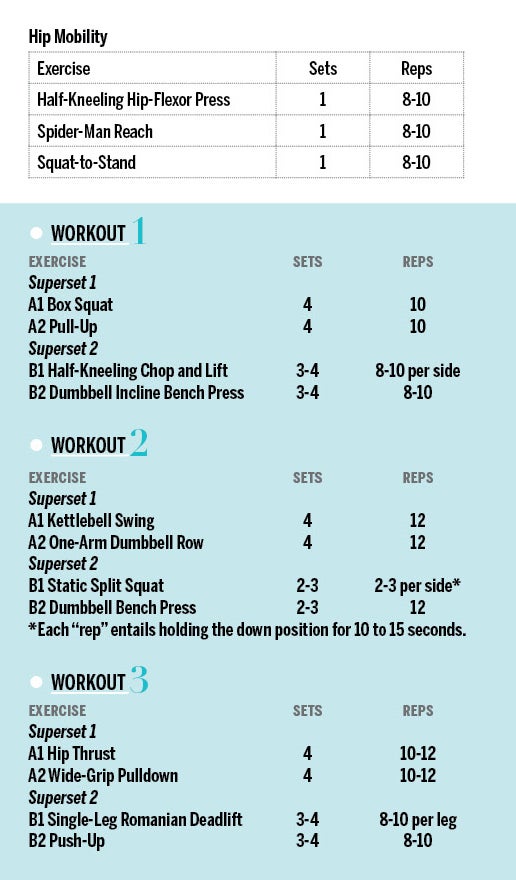
[Mobility]
Half-Kneeling Hip-Flexor Press
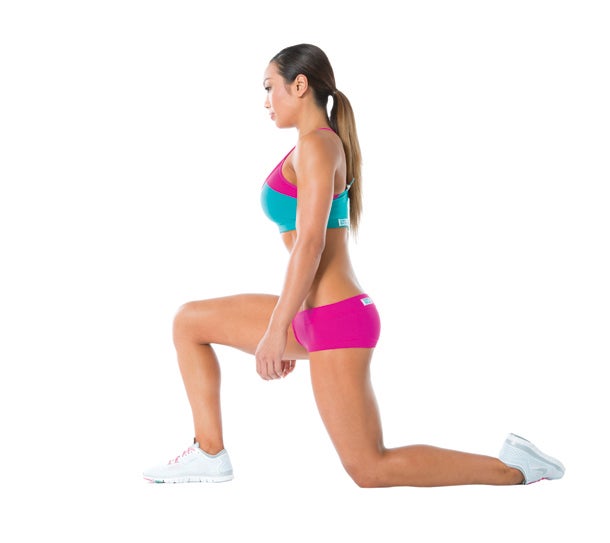
Muscles Emphasized: hip flexors, glutes, core
Setup: Kneel on the floor and bring one leg forward. Place your foot flat on the ground with your knee bent 90 degrees. Your kneeling thigh should be perpendicular to the floor and in line with your torso.
Action: Tuck your pelvis under and squeeze the glute of the down leg to extend your hip and press it slightly forward. Hold for one breath, then relax to complete one rep. Complete all reps on both sides.
Tip: The range of motion here is very slight, so be careful not to overstretch; simply tucking the pelvis under allows for appropriate resistance and length, according to Galbraith.
Spider-Man Reach
Muscles Emphasized: glutes, hip flexors, adductors, hamstrings, chest, shoulders
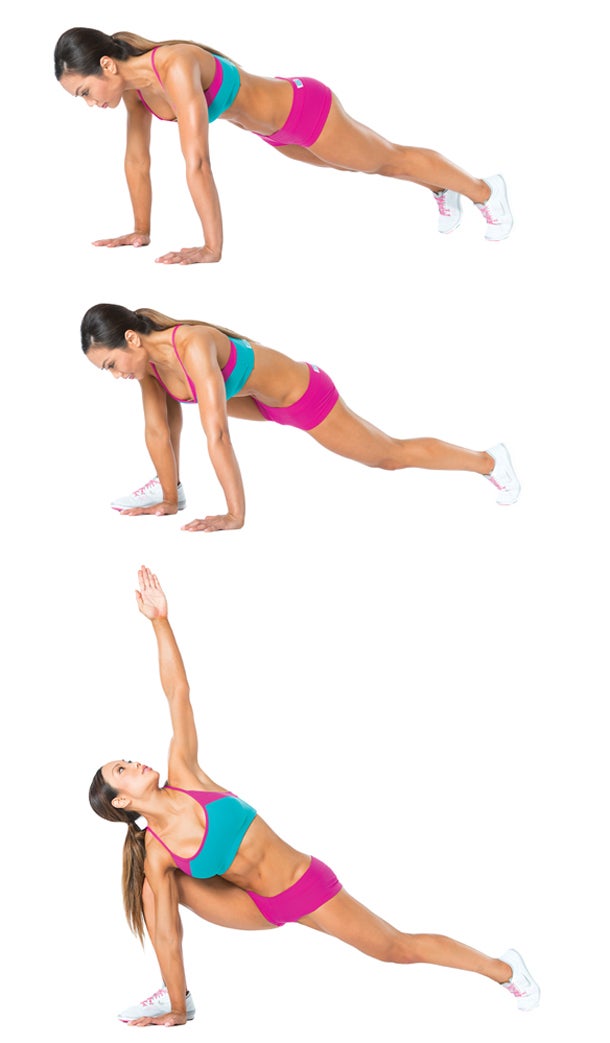
Setup: Get into a push-up position with your hands underneath your shoulders and your head, hips and heels in line.
Action: Bend your right knee, bring your foot forward and plant it just outside your right hand. Then lift your left hand and open up your chest, reaching up to the ceiling. Hold briefly and then lower your hand and return to the push-up position to complete one rep. Do all reps on one side before switching.
Tip: Don’t rush this stretch or force the range of motion. Do each part deliberately and with focus, and aim to get a little farther with each rep, Galbraith advises.
Squat-to-Stand
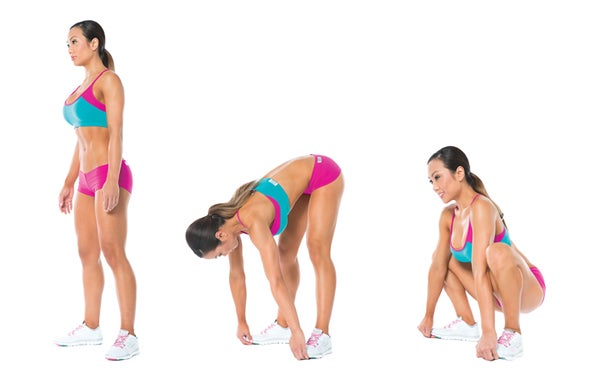
Muscles Emphasized: glutes, quads, hamstrings, adductors, lower back
Setup: Stand with your feet shoulder-width apart and toes pointed slightly outward. Fold forward at the hips and grab your toes with your hands, keeping your legs as straight as possible.
Action: Bend your knees and lower your hips to assume a full squat position with a flat back and your knees outside your arms (hands still holding your toes). Hold this stretch for one count, then extend your knees and raise your hips to return to the bent-over position. Hold for one count to complete one rep.
Tip: Press out gently outward on the knees at the bottom of the squat to help open your hips, Galbraith says.
[Strength]
Box Squat
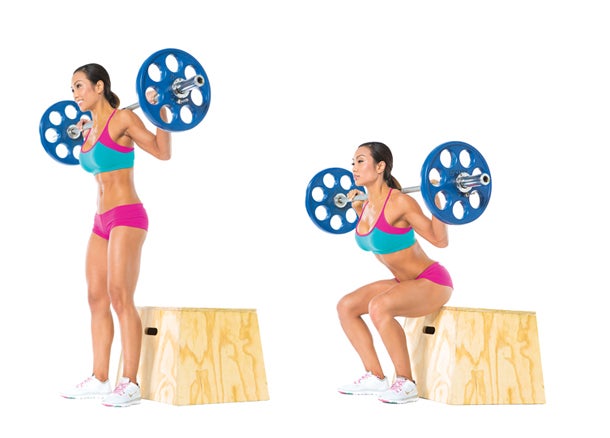
Muscles Emphasized: glutes, quads, hamstrings
Setup: Stand directly in front of a plyometric box or weight bench (facing away from it) with a barbell resting across your shoulders and your feet shoulder-width apart. The height of the box or bench should be such that your thighs are parallel with the floor when your glutes touch it at the bottom of a squat.
Action: Keeping your back flat and your abs tight, bend your knees and kick your hips back to squat and then sit directly on the box. Pause for a split second, then stand back up.
Tip: Don’t sit all the way onto the box; touch your glutes down and then stand back up, weight in your heels throughout.
Kettlebell Swing

Muscles Emphasized: glutes, hamstrings, lower back
Setup: Hold a kettlebell in both hands with the weight hanging straight down in front of you, feet shoulder-width apart.
Action: Keeping your back flat and your knees slightly bent, push your hips back to bring your torso down and forward, allowing the kettlebell to travel back and between your legs. Explosively extend your hips and knees to swing the kettlebell up in front of you to shoulder height or higher. Let the kettlebell fall back down via gravity between your legs and go right into the next rep.
Tip: Don’t pull the weight with your shoulders or arms; the momentum created from the hips and knees is what should drive the kettlebell up.
Hip Thrust
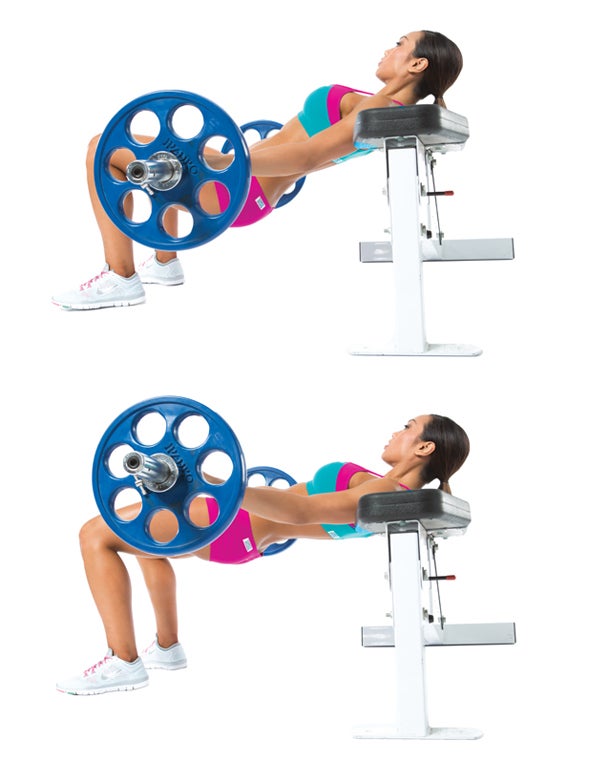
Muscles Emphasized: glutes, hamstrings
Setup: Lean against the side of a flat bench (preferably one bolted to the floor so it doesn’t move when you push against it) with your torso about 45 degrees with the floor and your knees bent, feet flat on the floor. Rest a barbell in the crook of your hips and hold it lightly to keep it in place.
Action: Keeping your knees parallel, extend your hips and drive the weight straight up until your torso and thighs are parallel with the floor. Pause and squeeze your glutes, then return back down under control.
Tip: If hip thrusts are new to you, do them without a barbell or try them on the floor to learn the mechanics, Galbraith recommends.
[Stability]
Half-Kneeling Chop and Lift
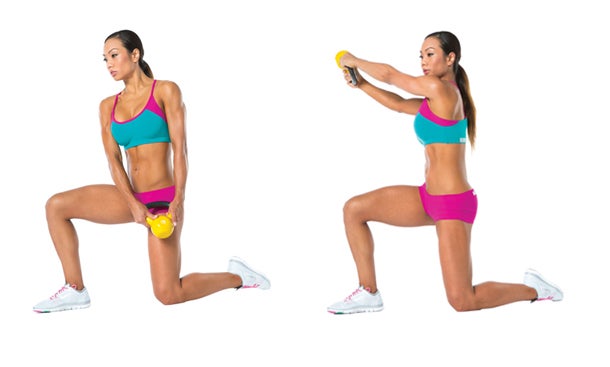
Muscles Emphasized: core, shoulders, upper back
Setup: Kneel on the floor and bring one leg forward, knee bent 90 degrees. Hold a kettlebell with both hands on the horns and extend your arms so the kettlebell is just outside the down leg.
Action: Keeping your hips square and your arms extended, lift the kettlebell up diagonally until it’s outside the opposite shoulder. Slowly lower the kettlebell back to the start position. Do all reps on one side before switching.
Tip: All rotation should occur at the thoracic spine (upper back), not through the hips or lower back. Squeeze the glute of the down leg to maintain optimal alignment, Galbraith advises.
Static Split Squat
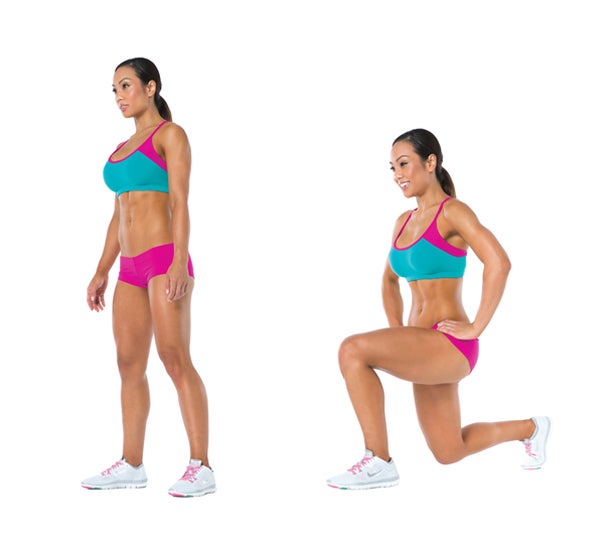
Muscles Emphasized: glutes, quads, hamstrings
Setup: Stand with your feet hip-width apart, then step back with your right foot into a staggered stance, hips square. Place your hands on your hips and draw your shoulders back.
Action: Bend your back knee and drop it straight down until your front thigh is parallel with the floor and your front knee makes a 90-degree angle. Hold here for 10 to 15 seconds, then extend your legs to rise to the start. Do all reps on one side before switching.
Tip: Make sure your front knee is stable and does not move inward. Fight to keep it in position as you hold the down pose of the move.
Single-Leg Romanian Deadlift
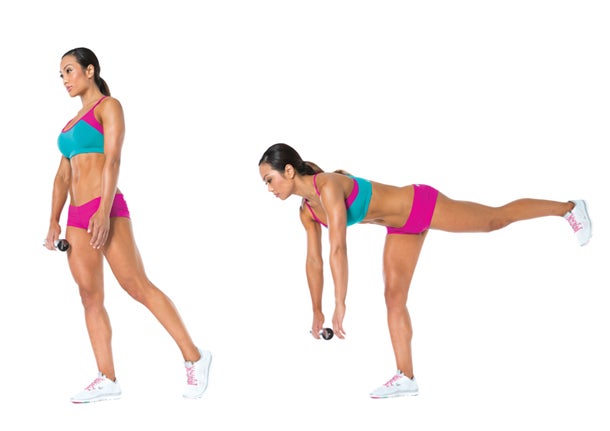
Muscles Emphasized: glutes, hamstrings
Setup: Hold a light dumbbell in your right hand with your arm hanging straight down toward the floor in front of you. Shift your weight into your right foot and bring your left leg behind you slightly, knee straight.
Action: Hinge forward with a flat back and lower the dumbbell toward the floor, simultaneously lifting your left leg behind you. When your torso and rear leg are parallel to the floor, reverse the move and rise back to the start. Do all reps on one side before switching.
Tip: Keep your hips square throughout the move. Focus on a point a few feet in front of you to help maintain your balance.